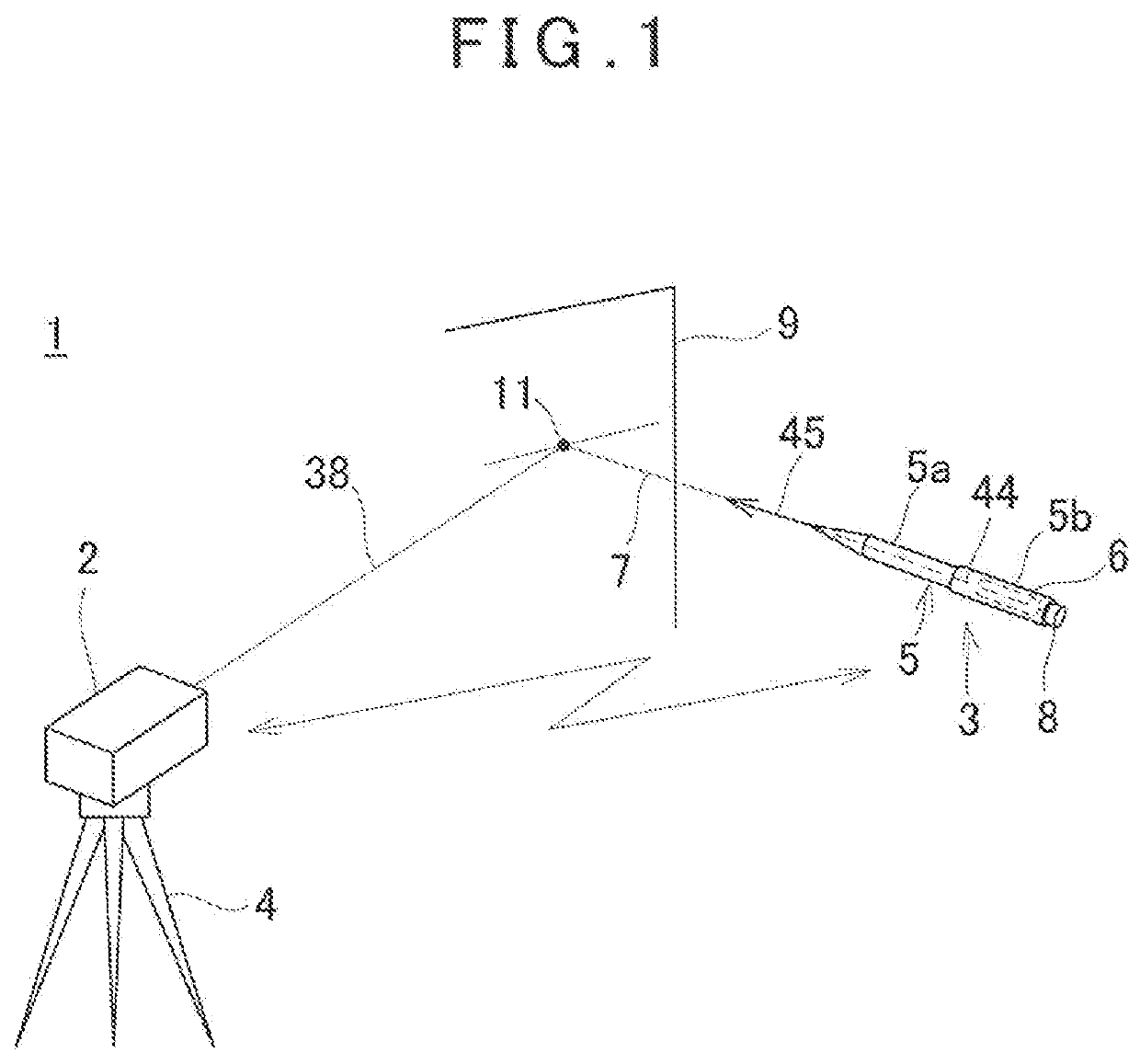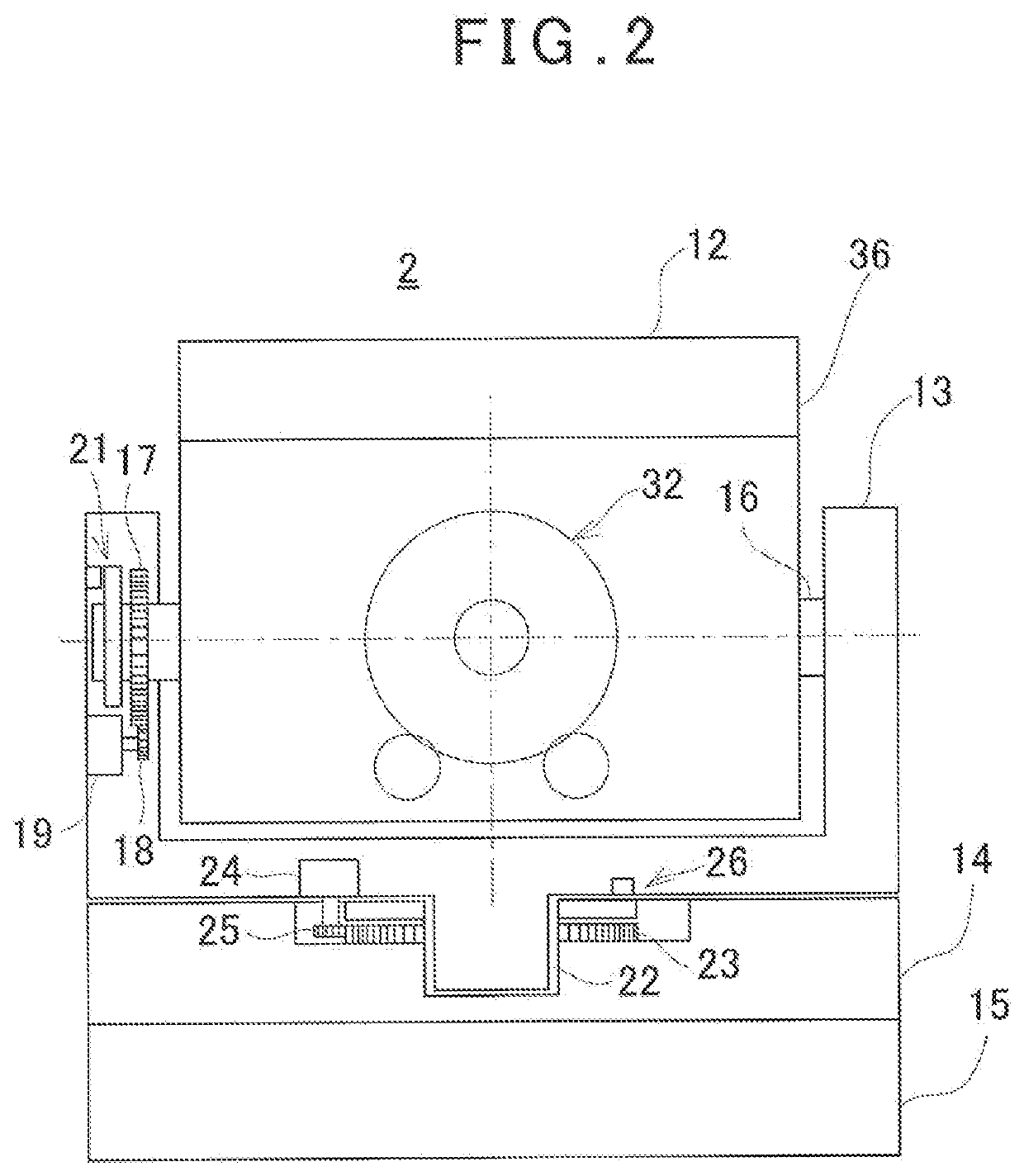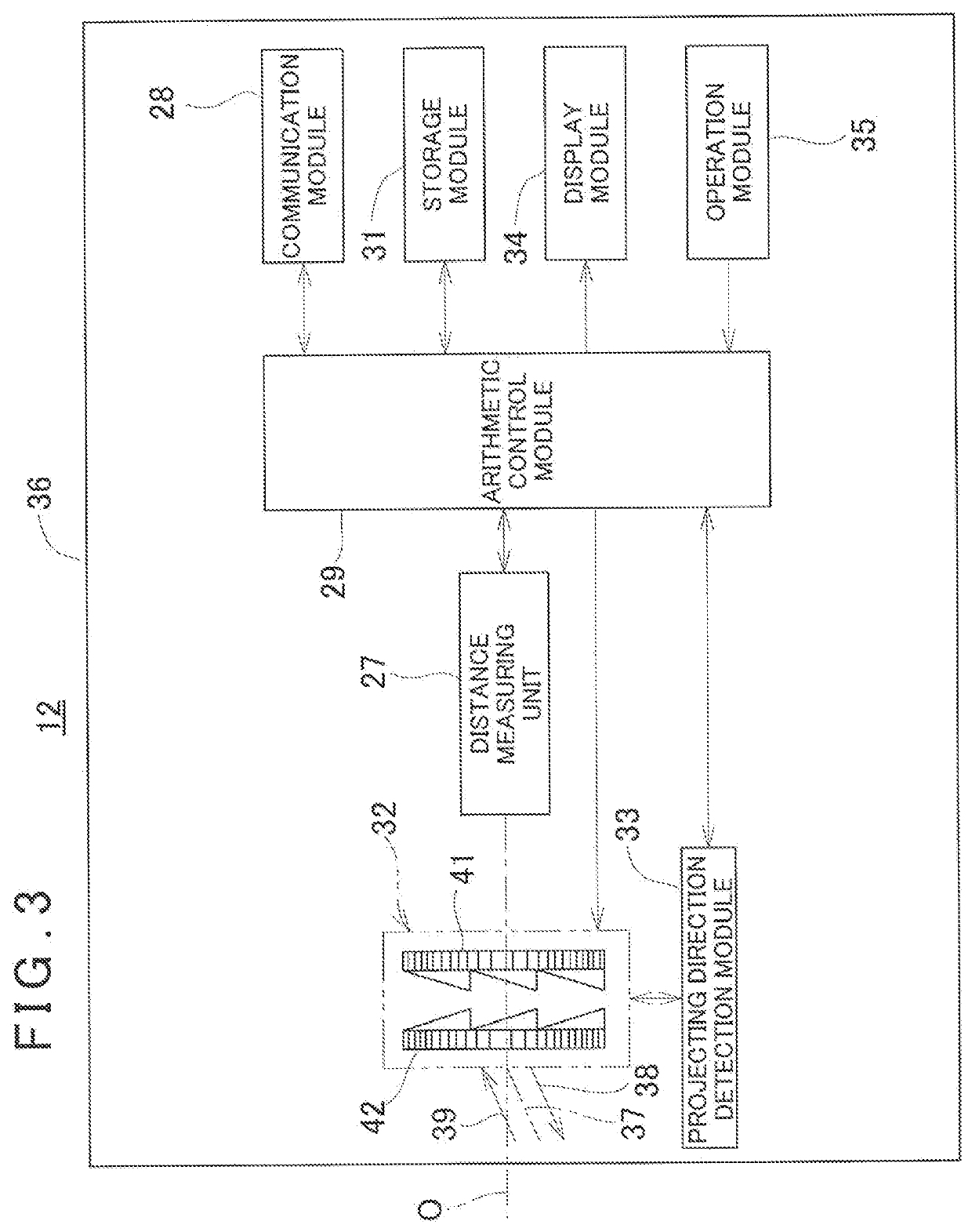Surveying System
- Summary
- Abstract
- Description
- Claims
- Application Information
AI Technical Summary
Benefits of technology
Problems solved by technology
Method used
Image
Examples
first embodiment
[0032]First, in FIG. 1, a description will be given on an outline of a surveying system according to the present invention.
[0033]A surveying system 1 has a surveying instrument 2 provided at an arbitrary position and a trigger device 3 having a trigger communication module 6 which can communicate with the surveying instrument 2. The surveying instrument 2 is, for instance, a laser scanner, and the surveying instrument 2 is provided on a tripod 4. The trigger communication module 6 may be externally provided to a later-described pole 5 or may be provided inside the pole 5.
[0034]The trigger device 3 has a cylindrical pole 5. The pole 5 is configured to have the diameters which are different on one side and the other side. In the present embodiment, the one side is a narrow-diameter portion 5a having a smaller diameter and the other side is a thick-diameter portion 5b which is concentric with the narrow-diameter portion 5a and has a larger diameter, Further, the narrow-diameter portion...
second embodiment
[0087]Next, a description will be given on the present invention by referring to FIG. 6. It is to be noted that, in FIG. 6, the same components as shown in FIG. 1 are referred by the same symbols, and a description thereof will be omitted.
[0088]In case of the trigger device 3 according to the first embodiment, the movement of the pole 5 in a radial direction can be automatically tracked based on a measurement result of a search scan. On the other hand, the movement of the pole 5 in an axial direction cannot be tracked since a measurement result does not change. Therefore, in the second embodiment, a trigger device 3 has a target 47, the movement of the target 47 in the axial direction can be detected based on a measurement result of the target 47 and the trigger device 3 can be tracked in all directions.
[0089]The target 47 is a cylindrical member whose diameter is larger than the diameter of a pole 5, and the target 47 is provided at a boundary portion between a narrow-diameter port...
PUM
 Login to View More
Login to View More Abstract
Description
Claims
Application Information
 Login to View More
Login to View More - R&D
- Intellectual Property
- Life Sciences
- Materials
- Tech Scout
- Unparalleled Data Quality
- Higher Quality Content
- 60% Fewer Hallucinations
Browse by: Latest US Patents, China's latest patents, Technical Efficacy Thesaurus, Application Domain, Technology Topic, Popular Technical Reports.
© 2025 PatSnap. All rights reserved.Legal|Privacy policy|Modern Slavery Act Transparency Statement|Sitemap|About US| Contact US: help@patsnap.com



